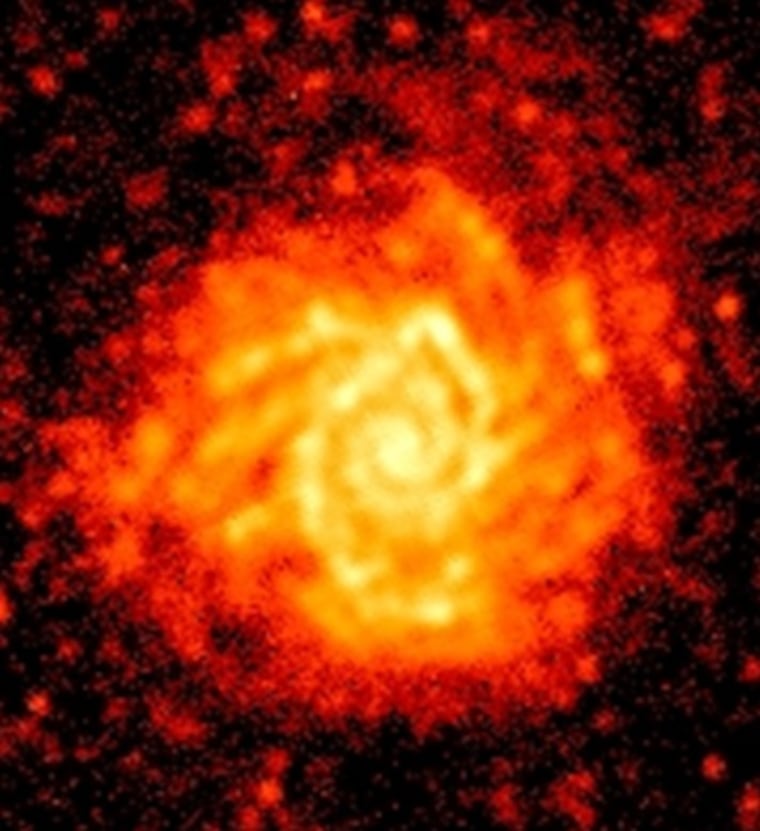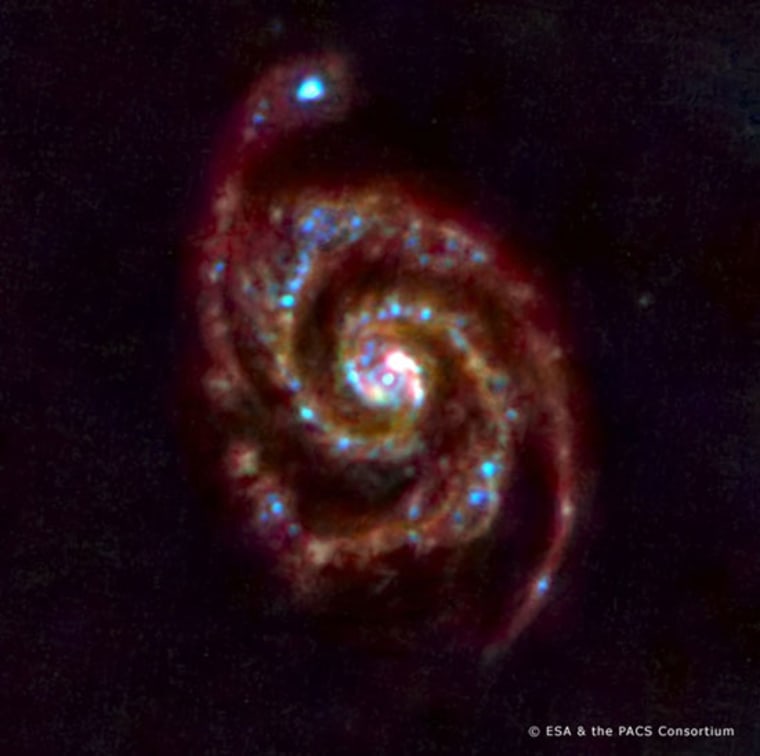The European Space Agency's Herschel telescope is up and running, with its first observations revealing water and carbon as well as dozens of distant galaxies.
The new space telescope, which launched on May 14 with its sibling Planck, has now carried out its first test observations with all of its instruments.
Herschel is the largest, most powerful infrared telescope ever launched into space. Its observations in the far-infrared to sub-millimeter wavelengths of light will allow astronomers to study some of the coldest objects in space, not visible in other wavelengths.
Herschel took a "sneak preview" image of the distant galaxy M51 in June in an early attempt to demonstrate that its camera eye works. In particular, scientists wanted to be sure the telescope is focused and correctly aligned with the science instruments
While Herschel was making its test observations, Planck cooled its instruments down to their operational temperature of minus 459.49 degrees Fahrenheit (minus 273.05 Celsius). This temperature is just 0.1 Celsius above absolute zero, the coldest temperature theoretically possible in our universe.
On June 24, Herschel's Spectral and Photometric Imaging Receiver (SPIRE) was trained on two galaxies for its first look at the Universe. The galaxies showed up prominently, providing astronomers with their best images yet at these wavelengths, and revealing other, more distant galaxies in the background of the images.
The pictures show galaxies M66 and M74 at a wavelength of 250 microns, longer than any previous infrared space observatory, but still the shortest SPIRE wavelength.
SPIRE is designed to look at star formation in our own Milky Way galaxy and in nearby galaxies, but it will also search for star-forming galaxies in the very distant universe.

"These quick first light observations have produced dramatic results when we consider that they were made on day one," said SPIRE Principal Investigator Matt Griffin of Cardiff University of Wales.
Scientists used Herschel's Heterodyne Instrument for the Far-Infrared (HIFI) on June 22 to look for warm molecular gas heated by newborn massive stars in the DR21 star-forming region in the constellation Cygnus, or the Swan.
It works by zooming in on specific wavelengths, revealing the spectral fingerprints of atoms and molecules and even the physical conditions of the object observed. This makes it a powerful tool to study the role of gas and dust in the formation of stars and planets and the evolution of galaxies.
Herschel observed ionized carbon, carbon monoxide, and water in DR21.
The first observation with Herschel's Photodetector Array Camera and Spectrometer (PACS) instrument was carried out on June 23. It targeted a dying star known as the Cat's Eye Nebula. Discovered by William Herschel in 1786, this nebula consists of a complex shell of gas thrown off by a dying star.
With the PACS spectrometer it is possible for the first time to take images in spectral lines and see how the wind from the star shapes the nebula in three dimensions.
Following these images, Herschel is now in the performance verification phase, where the instruments will be further tested and calibrated. This phase will last until the end of November, after which the mission will begin its routine science phase.
